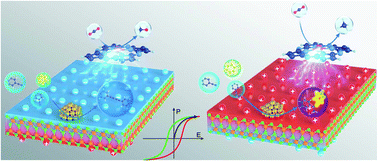Catalysis based on ferroelectrics: controllable chemical reaction with boosted efficiency
Abstract
Catalysts, which can accelerate chemical reactions, show promising potential to alleviate environmental pollution and the energy crisis. However, their wide application is severely limited by their low efficiency and poor selectivity due to the recombination of photogenerated electron–hole pairs, the back-reaction of interactants. Accordingly, ferroelectrics have emerged as promising catalysts to address these issues with the advantages of promoted light adsorption, boosted catalytic efficiency as a result of their intrinsic polarization, suppressed electron–hole pair recombination, and superior selectivity via the ferroelectric switch. This review summarizes the recent research progress of catalytic studies based on ferroelectric materials and highlights the controllability of catalytic activity by the ferroelectric switch. More importantly, we also comprehensively highlight the underlying working mechanism of ferroelectric-controlled catalysis to facilitate a deep understanding of this novel chemical reaction and guide future experiments. Finally, the perspectives of catalysis based on ferroelectrics and possible research opportunities are discussed. This review is expected to inspire wide research interests and push ferroelectric catalysis to practical applications.

- This article is part of the themed collection: Recent Review Articles


 Please wait while we load your content...
Please wait while we load your content...